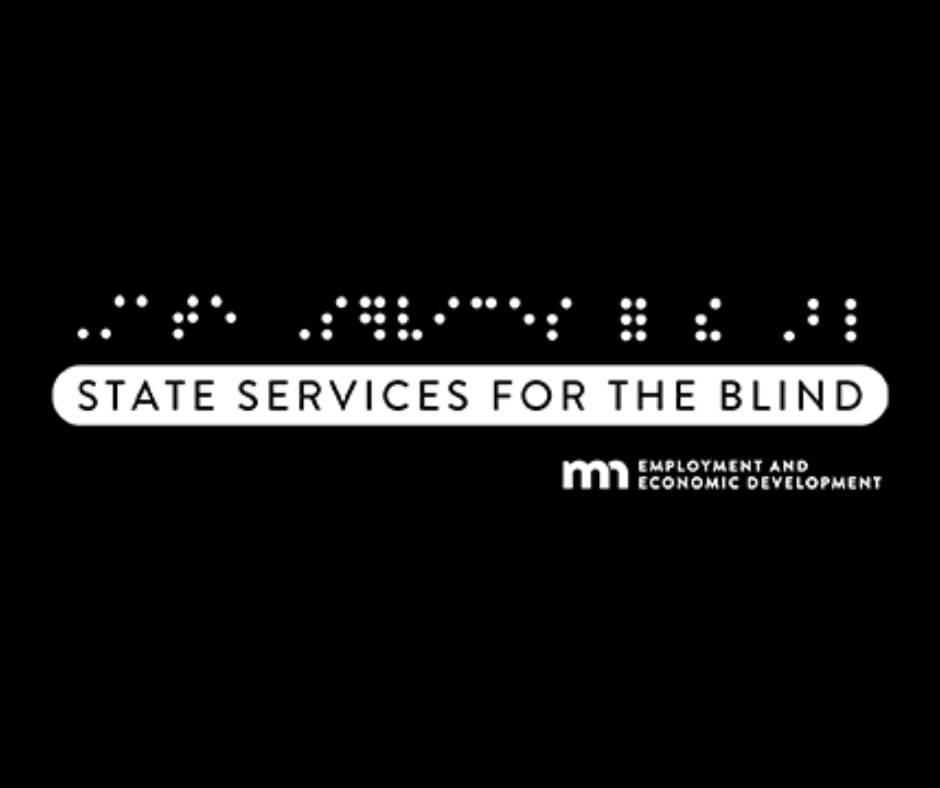 A guest article by our partners at State Services for the Blind.
A guest article by our partners at State Services for the Blind.
State Services for the Blind (SSB) is proud to join with the Council on Disability to celebrate Low Vision Awareness Month in February. Many Minnesotans don’t realize that the majority of consumers we serve identify as “low vision.” This means that many Minnesotans struggling with vision loss may not know that SSB can help. If you are a senior citizen and your vision has reached a point where you find everyday tasks more challenging, give us a call—we can help. If vision loss is a barrier to getting a job, staying in your job, or advancing in your career, get in touch with us–we’re here for you. Finally, if you’re struggling to read print, SSB’s Communication Center might have a great solution for you!
Whether you have low vision, no vision, or varying levels of vision, what matters is not what you see, but what you can do. At SSB we’re here to help blind, DeafBlind, low vision, and print-disabled Minnesotans find the tools and resources they need to live their dreams. We are inspired by the vision of the Council on Disability to create “A barrier-free Minnesota where every person with a disability has full access to all aspects of life.”
For this Low Vision Awareness month, let’s focus on living well with low vision. Here are some strategies, thoughts, and tips from staff and customers at SSB.
Adapting to Vision Loss: Suggestions from Naomi Cohn
In her new book, The Braille Encyclopedia, St. Paul poet Naomi Cohn writes about her journey with vision loss: “My life got a whole lot better when I focused less on medicine and more on how to adapt, including engaging in vocational rehabilitation, which I experienced as empowering me to live fully in the body I had.”
“Even over the course of writing and revising this book I’ve used a variety of strategies,” Naomi writes, “including combining magnification and the VoiceOver screen reader on my Mac and phone, making braille with slate and stylus, and using dictation and the braille screen input function on my phone. Since none of these methods or combinations works perfectly, and since all of them, one way or another, take a toll physically, my other constant companion is a timer[.] I limit the increments in which I read or write to limit the wear and tear on my body.”
Smartphones: The Swiss Army Knives of Accessibility
“With a smartphone,” says SSB Assistive Technology Specialist Jesse Anderson, “you have an amazing tool in the palm of your hand that gives you access to so much so quickly. You can use it to read, to identify something in your environment, to help you navigate, to read your mail, or buy your groceries. Smartphones are like the Swiss army knife of accessibility, and they have truly been a game changer.”
“You might be intimidated if your new to smartphones,” Jesse adds, “But you’ll find that you’ll learn quickly, and you’ll be able to do so many more things that you thought might not be possible.”
Learning to Do: Non-Visual Techniques in Everyday Life
When Director Natasha Jerde started as a Vocational Rehabilitation Counsellor at SSB, she completed six weeks of adjustment to blindness training, a requirement for all counselors to do this, she wore an eye mask to block out her vision, or she wore goggles that simulated various low-vision conditions. As a sighted person, Director Jerde finds herself using these nonvisual techniques every day. “I can reach into a drawer or a cabinet or my purse and find what I need by touch. Or, I’ll pour a glass of water and use a fingertip bent over the rim to tell me when the glass is full, so I don’t have to be looking at it.” She adds, “When I’m making something in the kitchen, I use a lot of the techniques I learned in my training. I don’t have to be always looking at what I’m doing, and I manage to stay more organized.”
Every day, at SSB, we see Minnesotans who are blind, DeafBlind, and low vision meeting life’s challenges with resilience, creativity, and perseverance. Low vision Minnesotans join the thousands of people with disabilities who are living their lives, helping out their neighbors, breaking down barriers, and making our state more vibrant, more welcoming, and a better place for all of us.